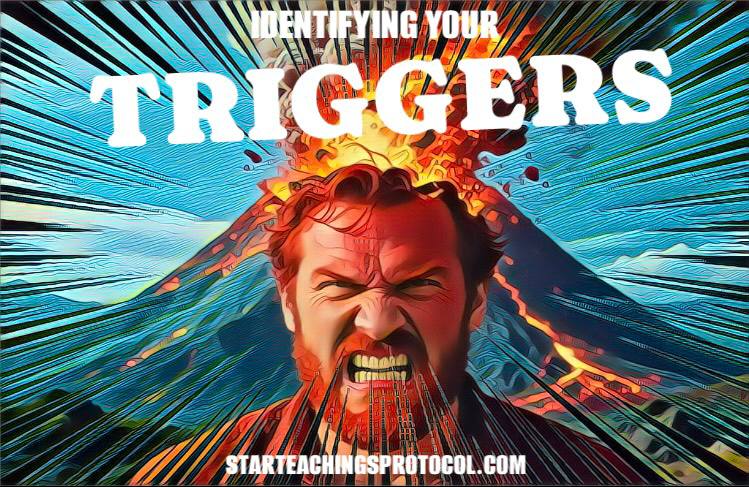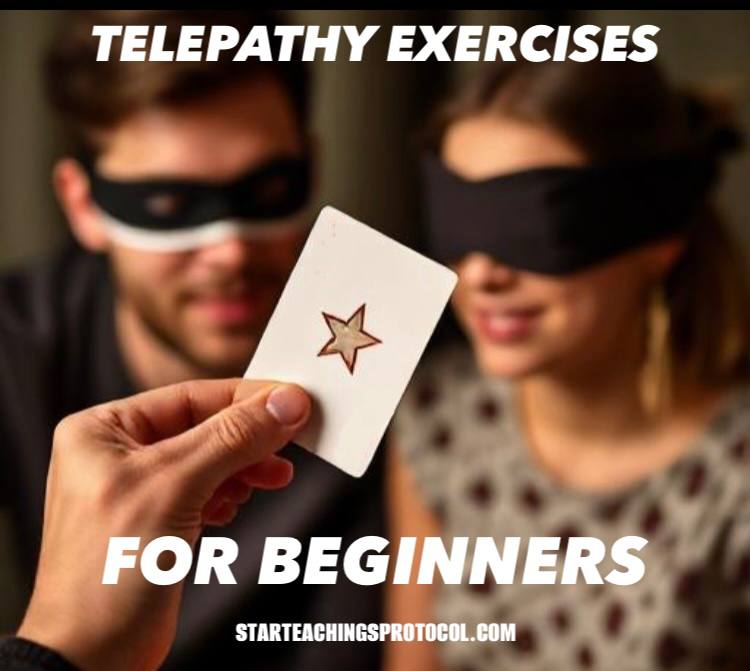What are triggers?
Triggers are the things that set off a strong reaction in you. Something that provokes a feeling of anger, outrage, shock, sadness, injustice, intolerance, impatience, incredulity, disbelief, fear or similar. Basically, anything that is not acceptable to you and causes a strong emotional reaction.
Hypnotised
Most people are hypnotised and unaware that they are hypnotised. This is exactly how hypnotism works; the subject of the hypnosis is unaware of it upon them.
They are conditioned by the state through the education system to perceive their subjective reality within binary options. Also tending towards collectivism rather than individualism.
Binary Minds
Will always think in 2 options, good & bad, good and evil, black and white, yes and no etc. They have been programmed to think in a binary way so that they can become slaves and make predictable reactions. They don’t know this but it’s a way of taking a divine being of light and making them a drone in a program with just one switch that has two options.
These mind slaves are not aware that they are mind slaves, particularly the ones who think they could not be hypnotised or brainwashed because they are too clever with arrogant egos.
Whereas normal humans who are not indoctrinated and conditioned by their societies education and academic institutes tend to have a more expansive holistic way of thinking, that is not as easily manipulated.
To identify your triggers, you need to develop self-awareness by observing your emotional and physical responses and looking for patterns in situations that cause intense reactions. Triggers are personal and often linked to past experiences or trauma, not just present circumstances. These past experiences have created a bias of thought scripts that then form the individuals belief system. Which then becomes triggered when activated.
Step 1: Listen to Your Body and Mind
The first step is to pay attention when a situation generates a strong emotional or physical response that seems disproportionate to the current event.
Physical Signs of Being Triggered:
- Rapid or shallow breathing
- Increased heart rate or a pounding heart
- Muscle tension (e.g., clenched jaw, fists)
- Upset stomach or nausea
- Sweaty palms or feeling hot/cold
- Shakiness or dizziness
Emotional and Mental Shifts:
- A sudden rush of intense emotion (anger, sadness, fear, anxiety, shame)
- Feeling overwhelmed, helpless, or out of control
- Thoughts racing or becoming disorganized
- An urgent need to escape the situation, become defensive, or freeze up
Damage to the Body
Every time you get triggered, that is where the work is needed. Being affected by outside events, people, their words or deeds means you are under the influence of their control, and not able to control your own emotions. It means that you can be easily manipulated by other’s actions if you are an emotional and reactionary person.
Energy Forms
You are the only one holding on to the energy, you are the only one whose body is reacting strongly. It is putting itself under strain and duress by the emotions you feel. The emotions you feel are ones you choose to feel. Holding on to anger, sadness, guilt, shame etc is not doing your health any good. Not doing anything about it when you could, is also not good for your health. People need to understand, only if they truly want to change and improve their lives, that they have to understand what is causing them to suffer.
Looking at yourself to identify your suffering, and then facing those issues head-on with support, can get you smashing through the issues so they no longer control how you feel, think and respond to them. And no longer hold on to them or cause you distress and suffering.
Step 2: Keep a Trigger Journal
Regularly tracking your experiences in a journal can help you spot patterns you might otherwise miss. When a strong reaction occurs, make a quick note of:
The situation:
What exactly was happening? (e.g. “my work colleague interrupted me in a meeting”)
The context:
Who was involved, where were you, and what time of day was it?
Your reaction:
Detail both your emotional response (e.g. “felt invisible and unimportant”) and physical sensations (e.g. “stomach tied in knots”)
The thoughts:
What thoughts went through your mind right before or during the reaction? (e.g, “they think I’m stupid”)
Step 3: Look for Patterns and Connections to the Past
Review your journal entries from time to time. Have a look for repeating themes, specific people, or types of situations that consistently lead to distress.
Ask yourself:
“When in my life have I experienced something like this before?” Triggers are often connected to past pain, difficult memories, or ongoing still unresolved issues. For example, feeling ignored as an adult might be tied to childhood experiences of abandonment or not feeling heard.
Step 4: Seek Additional Support
Identifying triggers, especially those rooted in trauma, can be challenging to do on your own.
You don’t have to face them alone. There are various ways in which your triggers can be resolved, but first they need to be identified by you.
Friends and family and having someone you trust to be honest with you. It helps to get many different perspectives on a situation, so that you can get good helpful feedback or tips or life wisdom from others who have lived through a similar circumstance.
Help is also available, such as a therapist or counsellor, who can provide a safe, non-judgmental space to:
- Explore the reasons behind your triggers.
- Offer guidance on healing the source of your triggers.
- Teach you effective coping strategies.
If your triggers are significantly challenging in your daily life, relationships, or work, or if you are relying on any unhealthy coping strategies, then professional help is useful. You can find resources and support through organisations and also by searching for local therapy options near you.
Whatever you hold on to and do not forgive or let go of will then be able to have a hold over you. Have you ever thought of it this way?
You Hold It, Not It Holds You!
You see many people hold a grudge or resentment for years, some plot revenge etc or want some sort of justice or settlement. They hold on to something that happened to them years ago, long after the actual event. They hold on to that, and it taints the whole way they perceive reality and perhaps a certain gender or demographic or ideology or belief. They can’t let go of it, repeating over and over the same thought processes not knowing it is them and only them that is still affected by the incident or situation. They are the ones feeding it and ruminating and dwelling within it.
Root Cause
The key is to identify what triggers you, then look at why it does, what are the reasons and the root cause that created suffering in you or anger etc, that strong reaction.
Then change the context of that root cause, don’t just look at it from just your own perspectives and perception, get some other angles and knowledge from others. See yourself through multiple non-judgemental minds that can apply a different set of contexts to you.
Injustice & Unfairness
I have to be completely honest with you; you deserve just straight talk. There is no real justice or fairness in this corrupt system we live within, except in you.
The reason you feel aggrieved is because somewhere along the line you cared about something or someone and by whatever circumstances that life’s variables gave you at the time, they turned out negatively in your view. The unfortunate truth is that yes there are institutions and experts, but ultimately it’s you who holds the real ability to change and transform yourself within and shift your mindset with new psychological tools and supportive information.
Also true is that the world is a beautiful place with kind, supportive and genuine people in it too. Ones that have gone through the dark valley of the soul, have identified their triggers and pushed through them head on.
They realise that there are others like them too, who are just a bit further down at where they once were also, and want to help people out with their lived experiences and knowledge of how to deal with those triggers and that suffering.
There are always going to be things that are within a range, a spectrum. From positive and aligned to and with you, right through neutral in the middle and on to negative and that not aligned with you or to you. There will always be a range from good kind-hearted generous people on one side to unfortunately disturbed people at the other end that are abusive to themselves or others; who are toxic to your well-being and abuse and control and harm others. There are always going to be supporters and also critics. So just don’t give them your powers and hold over you with what happened.
Overcoming Adversity
Life will always give us challenges. There is no exact formula for overcoming these various challenges. There are stories about the ones who didn’t make it through their challenges and there are also survival stories too. By the very same people who went through those life changing challenges but found ways to keep going. They found the knowledge and the tools to overcome adversity and not only that but thrive.
Life is one learning journey, it’s a mixed realm of good, neutral and bad things, if it was only dark or only light, then you would be trapped in one side only as a slave. Knowing there are two options, dark and light but actually 3 not 2, dark, neutral and light, means you are not a slave to 1 choice of just dark or of just light. Not just a slave to two choices only either. There is always a third option.
Coping Strategies
Triggers don’t have to trap you. Here are some ways to alleviate the stress you cause yourself by being easily triggered.
- Tears
- Meditation
- Exercise – run or walk it off in nature.
- Mantras to occupy the mind
- Music to cheer the mood
- Shouting & Screaming into a pillow or nature
- Kinetic punching a pillow or punchbag
- Violet flame release with flames
- Sniffing a waterfall’s anions
- Positive affirmations
- Nervous system regulation
- Swimming to cleanse in live water
- River boat paper message away
- Sea boat paper message away
- Bury message in a location
- Release message off a mountain
- Discuss it with others like supportive friends and family
- Research the issue
- Visualisation – cutting chords of attachment
- Tapping therapy
- Service to Others to give you feelings of helping others to help you
These are just some of the coping strategies that you can use to vent off and release those negative thoughts and feelings. You don’t ever have to face any issues you have alone.
Everyone gets triggered in some way. Some its injustice or for others it’s other specific things. Just by observing yourself reacting you can see what creates that strong trigger.
The Media & Authorities
Have you ever watched a sports match and been emotionally invested in your team or player to win? The strength of emotions, the ups and downs, wins and disappointments? Have you watched the “personal stories” of the selected X Factor contestants, pulling at your heartstrings to tell you why they deserve to make it in celebrity fake-land?
These narratives put with backing music, are designed to pull your heart to react emotionally. Love or hate, never just something neutral or real. Designed narratives to keep you in black or white binary thinking and reactive mode. The media are especially good at narratives that provoke predictable public reactions. It’s all about winning over your mind and creating your beliefs and pulling you into good or bad.
Don’t fall for it, just observe yourself reacting internally first before responding externally. Then you are observing it as weather inside passing through you, not entangled in the emotions, but rather entertaining them. Not attached to them, but rather from more of an observer of yourself perception. This way the emotional climate passing through you informs you what type of person you are.
It’s ok to feel outrage and anger at people harming others. It’s ok to feel sad when you find out about animals or wildlife or the environment being damaged or polluted. It’s ok to disagree with your government’s corrupt rules and laws.
Diverting Negative flow into a Positive Flow
The trick is not to turn it in on yourself or take it out on others. It’s to not be provoked into reactions that are predicted and wanted by the controllers wanting to control your perception of reality. Channel your emotions into more positive actions that undermine the possibility of that thing that triggers you from happening to others or channel your outrage into positive change that counteracts the existence of negative systems. Be a force of change and a voice speaking up in truth informing others. You don’t have to keep holding negative energies that eat away at you from inside, you can channel them into aligned positive action or release them to the universe so that their chords of entanglement no longer have their hooks in you.
Feel things – Yes
It’s ok to feel things and it’s ok to react to them but it’s not good if it’s harming you or others and you suffer. It’s not good if you take it out on others and they suffer, or think you know about it to have that “justified” reaction. Ask yourself are you being played to react strongly in that way?
What’s more dangerous than knowledge is false knowledge (Amathia) that people thinking they know but just spouting their programs with arrogance. Not even self-aware of their own behaviours and continuing in ignorance to cause conflict with others.
Becoming aware, particularly self-aware is one of the first steps to identifying your triggers. If you want to stop being triggered then you have to become aware of yourself and how you react and why. Then that way you can identify and remove the triggers, as they will no longer provoke the energy of your response.
💖🙏🌟











